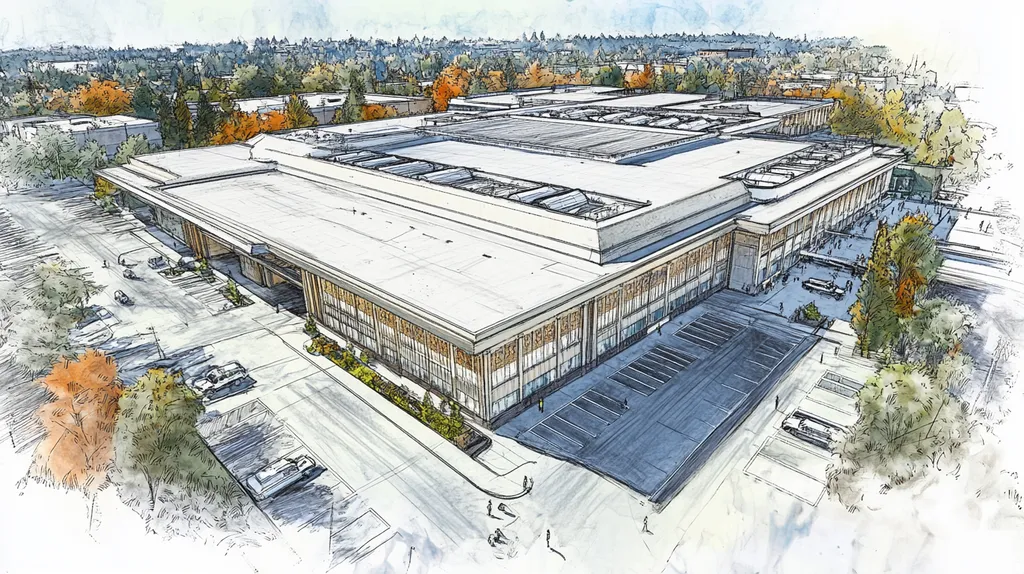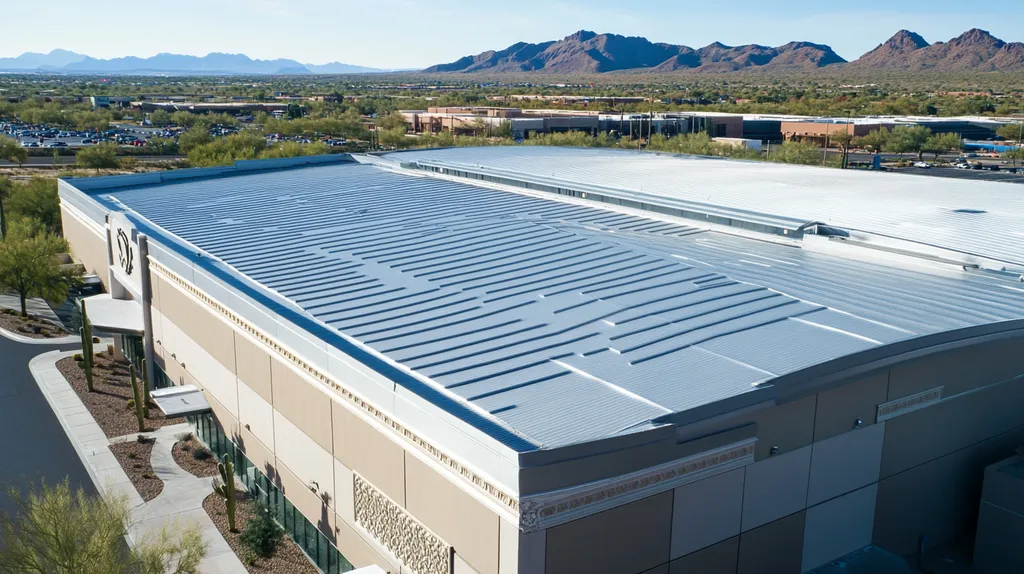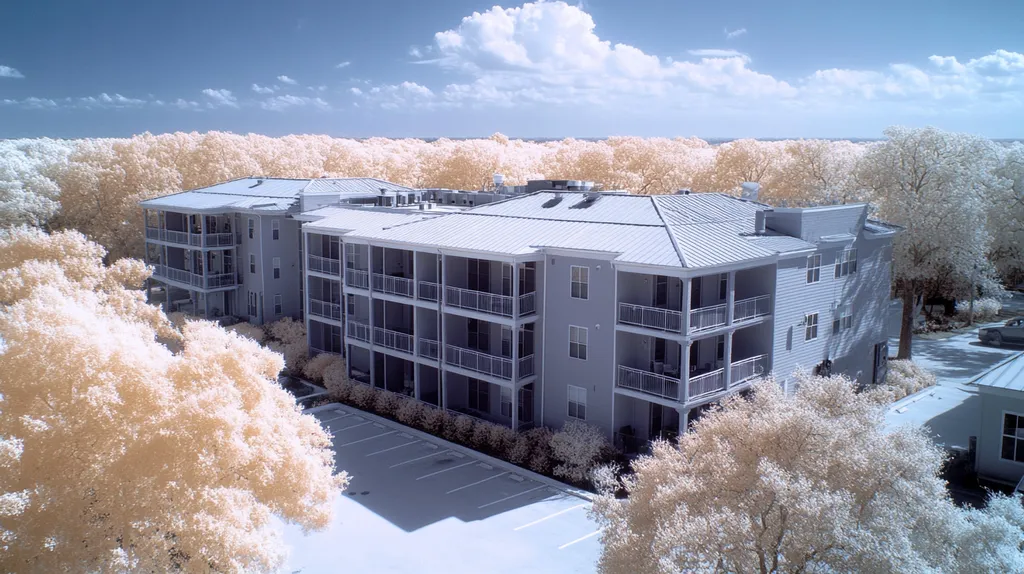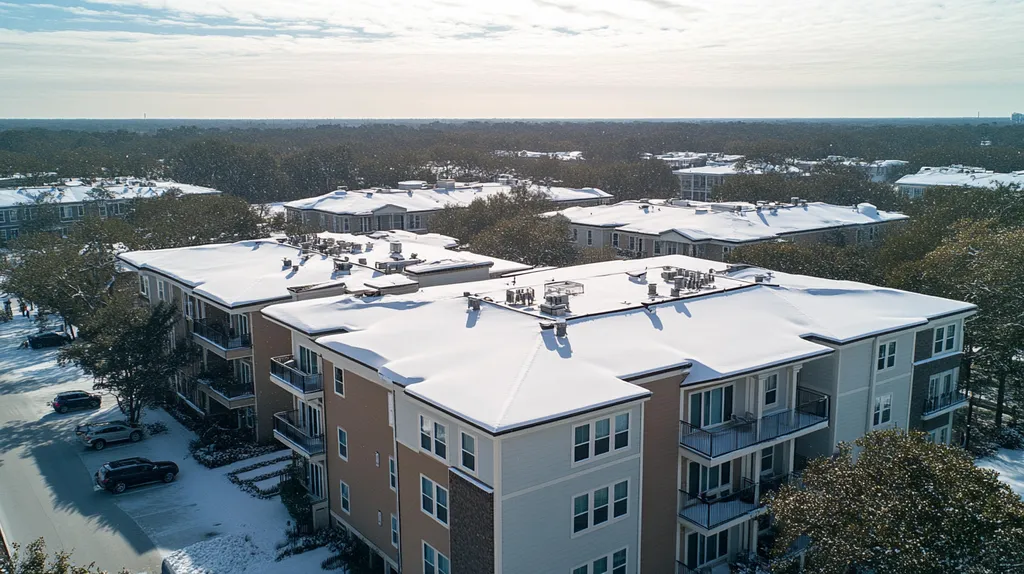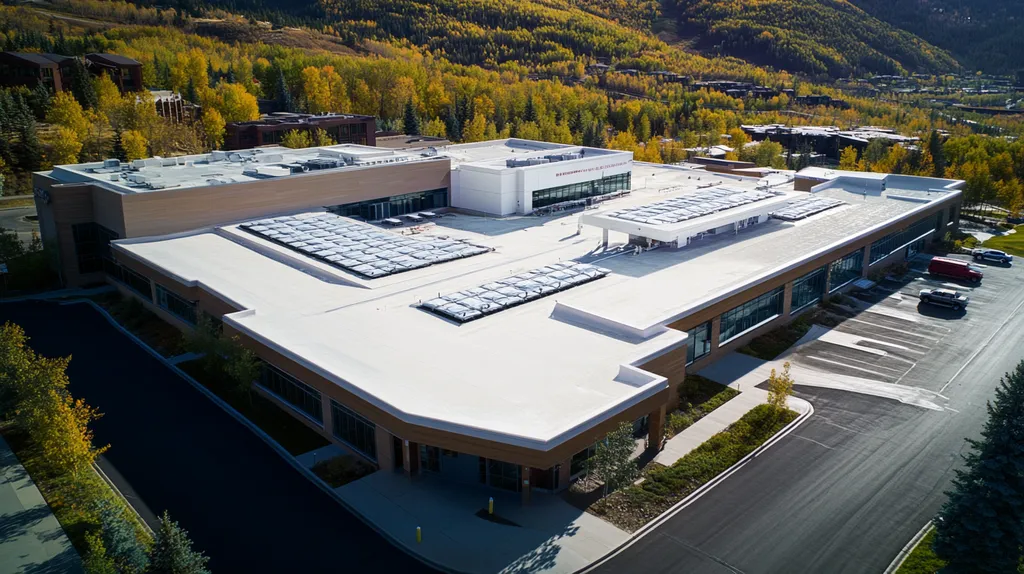In healthcare facilities, proper roof ventilation isn’t just about comfort—it’s a matter of life and death. Studies show that inadequate ventilation systems contribute to 20% of hospital-acquired infections, putting vulnerable patients at risk and increasing healthcare costs by millions annually.
From maintaining strict pressure relationships in operating rooms to ensuring proper air exchanges in isolation units, healthcare facility roof ventilation presents unique challenges that demand specialized solutions.
This comprehensive guide examines the critical components, implementation methods, and maintenance requirements essential for creating safe, compliant healthcare environments through effective roof ventilation systems.
SECTION 1: FUNDAMENTAL CONCEPTS
Effective roof ventilation in healthcare facilities is not just important; it’s essential for the safety of patients and staff. Poor ventilation can lead to airborne infections and elevate health risks, with studies indicating that roughly 20% of hospital-acquired infections stem from subpar air quality. This section delves into vital healthcare ventilation standards, the need for robust airborne infection control, and the specific ventilation requirements for patient rooms, laying the groundwork for compliant and safe roofing practices.
Healthcare Ventilation Standards
Healthcare facilities must comply with stringent ventilation standards to create a safe environment for all. The American Society of Heating, Refrigerating and Air-Conditioning Engineers (ASHRAE) sets forth guidelines for minimum ventilation rates. For example, ASHRAE Standard 170 outlines specific airflow requirements for various areas, ensuring that air exchange effectively dilutes contaminants.
Meeting these standards is not negotiable; non-compliance can lead to devastating consequences. Facilities that fall short may face regulatory penalties and experience damage to their reputations. Adhering to these guidelines not only enhances safety but also inspires confidence among patients and healthcare workers alike.
As ongoing research continues to refine best practices, it is crucial for facility managers to stay informed about evolving standards. Regular training on ventilation guidelines empowers staff to recognize their significance and apply them effectively in daily operations.
Selecting roofing materials that align with these ventilation standards can yield significant long-term advantages. For instance, well-designed roofs can incorporate advanced ventilation systems that boost energy efficiency while meeting necessary airflow specifications.
Airborne Infection Control
In healthcare settings, particularly in areas like surgical suites and isolation rooms, controlling airborne infections is paramount. Proper ventilation systems play a critical role in minimizing airborne pathogens. Research indicates that enhancing ventilation can significantly lower the risk of airborne transmission of viruses, including influenza and COVID-19.
Incorporating high-efficiency particulate air (HEPA) filters can markedly improve air quality by capturing harmful particles. Omitting such solutions can lead to rising rates of hospital-acquired infections, jeopardizing patient safety and straining healthcare resources.
To maximize their effectiveness, regular maintenance and monitoring of ventilation systems are vital. Establishing protocols for routine inspections allows facilities to promptly address issues, ensuring optimal performance.
Investing in advanced ventilation solutions not only safeguards patient health but can also shorten hospital stays and reduce overall treatment costs. Ultimately, this supports better patient outcomes and enhances healthcare budgets.
Patient Room Ventilation Needs
Ventilation in patient rooms demands a tailored approach to ensure both safety and comfort. Typically, these rooms feature dedicated supply and exhaust systems designed to achieve appropriate air exchange rates, effectively reducing the risk of airborne infections.
In sterile environments, such as intensive care units, it is vital to maintain positive pressure and proper airflow. This setup prevents outside contaminants from infiltrating spaces where patients require the highest levels of protection, while simultaneously delivering fresh air.
Additionally, patient comfort must be prioritized. Effective ventilation systems should maintain optimal temperature and humidity levels, enhancing the healing environment. Poor ventilation can lead to discomfort, potentially delaying recovery times.
Facility managers need to consider how roofing decisions impact ventilation systems. Installing roofs that facilitate the seamless integration of ventilation components can lead to significant operational efficiencies and improved patient care in the long run.
SECTION 2: SYSTEM COMPONENTS
The stakes for healthcare facility roof ventilation systems are higher than ever, as poor airflow directly threatens patient safety and can have severe operational ramifications. Airborne pathogens make it essential for facilities to have efficiently designed ventilation systems that not only protect health but also enhance overall functionality. A clear understanding of the key components that make up these systems becomes crucial for facility managers aiming to foster a safe environment for both patients and staff.
Air Handling Units (AHUs)
Air Handling Units (AHUs) are the backbone of effective airflow management in healthcare facilities. They circulate air throughout various spaces, removing contaminants and introducing fresh air to maintain a healthy environment. AHUs with state-of-the-art filtration can significantly lower the presence of airborne pathogens, ensuring that vulnerable patients receive the clean air they need.
Each hospital’s AHU can be tailored to meet the unique airflow and filtration demands of different departments. For instance, surgical suites necessitate stricter air quality controls due to the sensitivity of patients there. Regular monitoring and maintenance of AHUs are vital; this ensures they continue to perform optimally, safeguarding both health and operational efficiency.
Additionally, incorporating energy recovery systems within AHUs can lead to significant cost savings. These systems enhance energy efficiency without compromising air quality. Advanced sensor technologies can also fine-tune AHU operations based on real-time occupancy and air quality data, providing a dynamic approach to managing airflow.
Ultimately, a well-functioning AHU is essential for any healthcare facility. It not only influences air management but also directly impacts patient outcomes and workflow effectiveness.
Supply and Exhaust Systems
Supply and exhaust systems are crucial for maintaining balanced airflow in healthcare environments. These interconnected systems work to provide fresh, clean air while effectively removing stale or contaminated air. A well-designed supply system is particularly valuable in minimizing the risk of airborne pathogens transmission.
For instance, in busy areas such as waiting rooms, robust supply systems ensure a steady stream of filtered air. At the same time, exhaust systems play a vital role in eliminating odors and contaminants from treatment areas, which is essential for patient comfort and safety.
Maintaining proper balance between supply and exhaust is key to preventing negative pressure zones that could inadvertently draw outdoor pollutants inside. Regular evaluations and maintenance of these systems ensure their ongoing effectiveness, promoting both health and comfort within the facility.
By integrating advanced controls and automation, healthcare facilities can further enhance system efficiency. Real-time adjustments based on occupancy levels can be made, ensuring that indoor air quality remains optimal at all times.
Filtration and Humidification Systems
Filtration and humidification systems are essential components in upholding superior air quality and patient comfort in healthcare settings. Effective filtration minimizes airborne pathogens, allergens, and dust, significantly lowering the risk of infections. High-Efficiency Particulate Air (HEPA) filters are widely adopted in sensitive areas, such as operating rooms, where air purity is critical.
Humidification systems also play a vital role by regulating moisture levels that support respiratory health. Low humidity can lead to patient discomfort and increase the likelihood of respiratory illnesses, making it crucial to monitor and adjust humidity levels accordingly.
Integrating filtration and humidification systems presents certain challenges, requiring a careful balance to achieve optimal performance. Facilities must continuously assess their needs and adapt their systems to accommodate varying environmental conditions and patient demographics.
By upgrading to the latest filtration technologies and ensuring precise installation, healthcare facilities can significantly enhance air quality, leading to improved patient outcomes and operational efficiency.
SECTION 3: IMPLEMENTATION METHODS
Caring for patients requires more than just skilled professionals; it calls for exceptional infrastructure, especially in roof ventilation systems. The quality of air can significantly influence patient outcomes, as evidenced by research showing that optimizing airflow can reduce airborne pathogens by as much as 50%. This section highlights essential design considerations for Airborne Infection Isolation Rooms (AIIRs), methods for installing vital ventilation components, and the importance of seamless integration with existing HVAC systems.
Design Considerations for AIIRs
Designing AIIRs demands a keen focus on airflow management and pressure balance. To effectively prevent cross-contamination, these rooms must maintain a negative pressure relative to their surroundings. Meeting air changes per hour (ACH) standards is not just preferred; it’s essential for safeguarding health.
Strategically placing supply and exhaust vents plays a critical role in achieving optimal airflow. Incorporating high-efficiency particulate air (HEPA) filters can greatly enhance air quality by capturing harmful pathogens. Staying updated with local codes ensures compliance and guarantees patient safety is prioritized.
Incorporating sensors into the design can help continuously monitor air quality and pressure. This real-time data helps facility managers make informed decisions and enhances overall operational efficiency, ultimately benefiting patient care.
Successful design lays the groundwork for spaces that not only meet healthcare needs but also contribute to overall facility performance and patient well-being.
Installation of Ventilation Components
The installation of ventilation components in healthcare settings requires precision and expertise. Installers must understand the unique requirements of AIIRs and other critical care areas. Proper sealing of ductwork is crucial; even small leaks can undermine infection control efforts.
Using high-quality materials designed specifically for healthcare environments can improve durability and functionality. For example, non-corrosive metal ductwork may offer long-lasting advantages in the demanding healthcare landscape. Ensuring timely installation prevents inefficiencies from the beginning.
Conducting regular inspections during installation helps identify potential issues early, reducing costly setbacks. Comprehensive checks ensure that the installation aligns with design specifications and meets expectations.
Training installation crews is vital in healthcare settings. When installation teams are well-versed in specific protocols, it leads to more effective ventilation systems, directly impacting patient safety and comfort.
Integration with Existing HVAC Systems
Integrating new ventilation components with existing HVAC systems can be complex yet essential. A thorough assessment is needed to ensure compatibility and optimize operational efficiency. Effective integration guarantees balanced airflow across the facility, which is vital for patient safety.
Updating controls may be necessary to adapt to advanced technology and systems. This involves not just physical connections but also a reevaluation of energy usage and airflow dynamics to improve performance throughout the building.
By maintaining a cohesive network, healthcare facilities can simplify monitoring and adjustments for air quality conditions. Prioritizing separate zones for AIIRs and other care units is essential to prevent cross-contamination.
Seamless integration enhances the resilience of healthcare infrastructure, improving both patient care and operational reliability while meeting regulatory standards.
SECTION 4: MAINTENANCE REQUIREMENTS
In healthcare facilities, the maintenance of roofing systems is not just about preservation; it is crucial for safeguarding patient well-being and ensuring smooth operations. Inadequate roof ventilation can lead to moisture accumulation, fostering poor indoor air quality and creating habitats for mold. Alarming statistics reveal that around 20% of patients in healthcare settings face infections attributable to environmental factors. This section outlines vital maintenance protocols that are necessary for sustaining optimal ventilation and protecting health.
Regular Inspection Protocols
Regular inspections of roofing systems are fundamental in healthcare settings. Conducting evaluations at least twice a year allows facility managers to uncover minor issues before they develop into expensive repairs. These inspections should encompass not only the roof itself but also the ventilation systems and accessible areas that could become obstructed.
Exhaust vents and rooftop HVAC equipment deserve particular scrutiny, as they are vital for maintaining proper air circulation. Unusual noises or odors from ventilation units may signal urgent problems that need immediate attention.
Seasonal checks can be strategic, aligning with weather patterns to ensure that damage from winter or summer conditions is promptly addressed. Keeping a detailed record of inspection findings fosters accountability and can help monitor ongoing issues over time.
Ultimately, a routine inspection regimen enhances both the longevity of the roofing system and the health security of patients and staff.
Maintenance of AHUs and Filters
The upkeep of Air Handling Units (AHUs) and their filters is critical for effective ventilation in healthcare facilities. AHUs play a central role in regulating air quality and humidity levels. Regular checks and timely replacement of filters are necessary to preserve airflow and capture harmful particles and pathogens.
Facility managers should design a routine for filter assessments and AHU cleaning. Clogged filters can disrupt pressure balance, negatively impacting ventilation efficiency. Generally, filters should be inspected every month, with replacements made every three to six months based on usage conditions.
Attention should also be paid to cleaning the coils and drain pans of AHUs to prevent bacterial growth. Maintaining these units in a sanitized state is vital for protecting sensitive patient populations. A neglected AHU system can lead to increased airborne contaminants, endangering patient safety.
Regular maintenance not only ensures optimal energy efficiency of AHUs but also significantly mitigates operational costs long-term.
Emergency Repair Procedures
A comprehensive emergency repair procedure is essential for promptly addressing unforeseen roof ventilation issues in healthcare facilities. Quick response measures can prevent extensive damage and avoid disruptions to patient care. Facility managers should develop clear protocols that include a contact list of roofing professionals for emergencies.
In cases of ventilation failure, it is vital to conduct an immediate assessment. This includes checking for blockages, equipment malfunctions, or roof leaks. Understanding the physical locations and functions of ventilation units helps in diagnosing the problem quickly.
Training facility staff in emergency protocols enhances preparedness. Staff should be familiar with locating emergency shut-off switches for AHUs and how to promptly report issues. Documenting incidents and their resolutions helps refine response procedures for future emergencies.
Proactive planning fortifies not just patient health but also the resilience of the entire facility’s operations.
SECTION 5: PERFORMANCE METRICS
Monitoring the performance metrics of roof ventilation in healthcare facilities is essential for ensuring patient safety and operational efficiency. With airborne infections responsible for a significant number of hospital-acquired illnesses, understanding and optimizing air quality, pressure relationships, and compliance with ventilation standards becomes critical. Performance metrics not only provide a pathway to better air quality but also form the foundation for regulatory compliance and efficient facility operations.
Air Change Rates and Quality
Air change rates play an essential role in keeping the air fresh and clean within healthcare environments. Typically measured as air changes per hour (ACH), these rates must adhere to strict thresholds to effectively minimize airborne contaminants. For example, surgical suites often require between 15 to 20 ACH to maintain the sterilization necessary for patient safety.
Higher air change rates correlate with lower concentrations of airborne pathogens, significantly reducing infection rates. Advanced HVAC systems can help facilities achieve these necessary rates while simultaneously improving energy efficiency, creating a win-win situation.
Regular monitoring is vital; routine testing can unveil any decline in performance, allowing for timely repairs or adjustments that have a direct impact on air quality and safety.
By prioritizing optimal air change rates, healthcare facilities not only protect patient health but also ensure compliance with industry standards that guide best practices in ventilation.
Pressure Relationships and Control
Proper management of pressure relationships within healthcare facilities is crucial for controlling airflow between different areas. Maintaining appropriate pressure differentials prevents airborne contaminants from moving freely through the facility and ensures that clean air reaches sensitive areas such as operating rooms.
Establishing positive pressure in certain rooms and negative pressure in areas like isolation rooms is vital to prevent cross-contamination. Utilizing advanced pressure control systems allows for automatic adjustments based on real-time air quality data, enhancing overall safety.
Failure to effectively manage these pressure relationships can result in dangerous air quality conditions, jeopardizing the well-being of patients and staff. Routine maintenance and monitoring practices must be established to uphold vital pressure controls across all facility zones.
By implementing a strong framework for pressure management, healthcare facilities significantly elevate infection control measures, fostering a safer environment for everyone involved.
Compliance with ASHRAE Standards
ASHRAE compliance is not just advisable but essential for healthcare facilities. These standards provide crucial guidelines on ventilation, indoor air quality, and energy efficiency to support optimal health and safety conditions.
Facilities that overlook ASHRAE standards risk both legal consequences and the erosion of patient trust. Regular assessments can pinpoint compliance gaps, prompting necessary improvements that enhance safety and comfort for patients and staff.
Investments in real-time monitoring technology can empower facilities to respond quickly to any deviations from compliance, effectively improving air quality and optimizing operational efficiency.
By making ASHRAE compliance a priority, healthcare facilities can consistently create and maintain environments that are not only safe but also conducive to healing and recovery.
SECTION 5: PERFORMANCE METRICS
Ensuring optimal roof ventilation in healthcare facilities is critical, as it directly impacts patient safety and the efficiency of operations. The CDC reports that airborne infections are a leading cause of hospital-acquired illnesses. Understanding performance metrics helps quantify air quality, maintain appropriate pressure relationships, and ensure compliance with regulations. Focusing on these key metrics is essential for creating safe environments in healthcare settings.
Air Change Rates and Quality
Air change rates are essential for maintaining fresh air circulation in healthcare facilities. Typically measured in air changes per hour (ACH), these rates must fulfill strict thresholds to minimize airborne contaminants. Surgical suites, for example, often require between 15 to 20 ACH to sustain sterile conditions, which is crucial for patient safety.
Higher air change rates are inversely related to airborne pathogen concentrations, thereby reducing infection rates. Advanced HVAC systems not only help maintain these rates but also improve energy efficiency, resulting in a win-win situation for healthcare facilities.
Regular monitoring of air change rates is vital. Routine testing can swiftly identify any drop in performance, allowing for timely repairs or adjustments that directly impact air quality.
By prioritizing adequate air change rates, healthcare facilities can protect patient health and ensure adherence to industry standards, ultimately fostering a safer healing environment.
Pressure Relationships and Control
Managing pressure relationships within healthcare facilities is crucial for directing the flow of air between different areas. Proper pressure differentials help contain airborne contaminants and ensure clean air is available in sensitive locations, such as operating rooms.
Maintaining positive pressure in certain areas while employing negative pressure in isolation rooms is essential for preventing cross-contamination. Advanced pressure control systems can automatically adjust settings based on real-time air quality data, enhancing safety throughout the facility.
Failing to manage these pressure relationships could lead to harmful air quality conditions, jeopardizing patient safety and increasing infection risks. Regular maintenance and monitoring are essential to maintain vital pressure control, ensuring effective ventilation across all facility areas.
Establishing a robust framework for pressure management significantly enhances infection control measures, creating a safer environment for patients and healthcare staff alike.
Compliance with ASHRAE Standards
Compliance with ASHRAE (American Society of Heating, Refrigerating and Air-Conditioning Engineers) standards is imperative for healthcare facilities. These standards provide essential guidelines regarding ventilation, indoor air quality, and energy efficiency, all critical for maintaining health and safety conditions.
Facilities that overlook compliance can face legal consequences and damage to patient trust. Regular assessments can reveal compliance gaps, prompting necessary improvements that enhance safety and comfort for everyone.
Investing in real-time monitoring technology enables facilities to quickly respond to any compliance deviations. This proactive approach not only improves air quality but also enhances overall operational efficiency.
By emphasizing ASHRAE compliance, healthcare facilities can consistently create and sustain environments that are safe for patients and conducive to their healing and recovery.
Looking Ahead
With healthcare-acquired infections costing hospitals over $28 billion annually, proper roof ventilation is no longer optional – it’s a critical investment in patient safety and operational efficiency.
The stakes continue to rise as emerging pathogens and increasing regulatory requirements demand more sophisticated ventilation solutions.
Healthcare facilities that fail to optimize their roof ventilation systems face mounting risks: rising infection rates, regulatory penalties, reputational damage, and escalating operational costs.
By implementing comprehensive ventilation strategies – from advanced filtration systems to real-time monitoring technologies – facilities can significantly reduce infection risks while improving energy efficiency.
The future of healthcare facility ventilation lies in integrated, intelligent systems that protect patients while adapting to evolving challenges in public health.
FREQUENTLY ASKED QUESTIONS
Q. Why is ventilation essential for healthcare facilities’ commercial roofs?
A. Effective roof ventilation is crucial for healthcare facilities to prevent airborne infections. Poor ventilation can lead to elevated health risks and compromise the safety of patients and staff. By adhering to strict guidelines, facilities can provide a healthier atmosphere that benefits everyone.
Q. What are the key components of an industrial roof ventilation system?
A. The key components include Air Handling Units (AHUs), supply systems, and exhaust systems. These elements work together to ensure proper airflow and air quality. Regular maintenance of these components is vital for effective operation and the overall health of patients.
Q. How can facility managers enhance patient room ventilation needs?
A. Facility managers should prioritize dedicated supply and exhaust systems to ensure optimal air exchange. Proper airflow helps reduce airborne infection risks, while maintaining a comfortable temperature and humidity level enhances patient recovery. Regular inspections are necessary to ensure ongoing effectiveness.
Q. What maintenance procedures are crucial for healthcare roof ventilation systems?
A. Regular inspections and timely maintenance of Air Handling Units (AHUs) and filters are essential. Facilities should also establish a routine for checking roof and ventilation systems. Consistent maintenance prevents issues that could lead to increased airborne contaminants and operational inefficiencies.
Q. How do performance metrics impact healthcare facility ventilation?
A. Monitoring performance metrics ensures optimal air quality and compliance with standards. Metrics like air change rates and pressure relationships help identify areas needing improvement, directly impacting patient safety and operational efficiency. Consistent assessment promotes a healthier environment within healthcare settings.
Q. What is the importance of ASHRAE standards for commercial roofing?
A. ASHRAE standards set critical guidelines for ventilation and indoor air quality. These standards are essential for healthcare facilities to achieve optimal health conditions and ensure compliance with regulations. Adhering to these guidelines fosters patient trust and promotes safety in care environments.
Q. How can facility managers respond to ventilation emergencies?
A. Developing clear emergency repair protocols and training staff is vital for addressing ventilation issues. This includes immediate assessments of ventilation failures and knowing how to contact roofing professionals effectively. Preparedness not only enhances patient safety but also ensures continuity of operations during emergencies.

